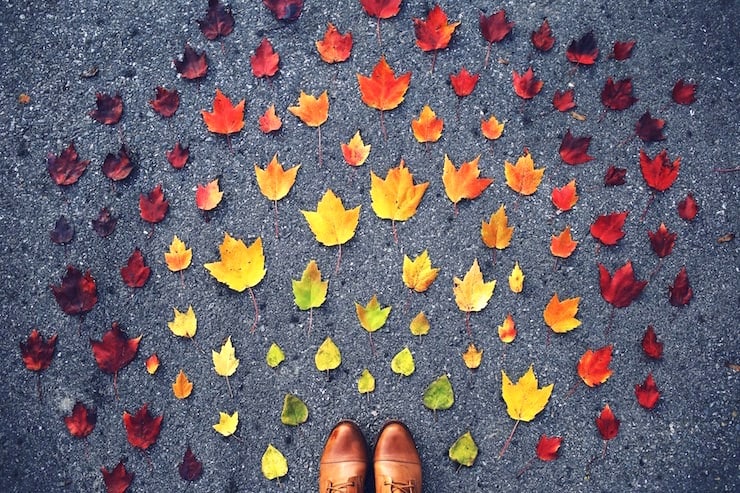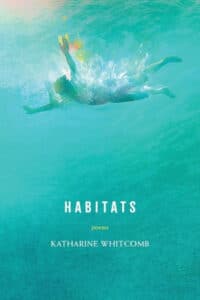About Katharine Whitcomb

Katharine Whitcomb
Katharine Whitcomb was born in Appleton, Wisconsin, and earned her B.A. from Macalester College in English. In 1995 she received an MFA in Writing from Vermont College of Fine Arts. She was a Stegner Fellow in Poetry at Stanford University from 1996-1998. She is the author of three full-length collections of poems: Habitats, published in 2024 by Poetry Northwest Editions in the Possession Sound Series; The Daughter’s Almanac, which was chosen as the winner of the Backwaters Prize and published by The University of Nebraska Press/The Backwaters Press; and Saints of South Dakota & Other Poems, which was chosen by Lucia Perillo as the winner of the Bluestem Award and published by Bluestem Pressa. She also has two poetry chapbooks, Hosannas (Parallel Press) and Lamp of Letters (Floating Bridge Press), winner of the 2009 Floating Bridge Chapbook Award. She is the co-author, with the artist Brian Goeltzenleuchter, of The Art Courage Program, a parody self-help book and art piece, published by Jaded Ibis Press in 2014. In addition to the Stegner Fellowship, her awards include a Loft-McKnight Award, a Writing Fellowship at the Fine Arts Work Center in Provincetown, and a Halls Fellowship at the Wisconsin Institute for Creative Writing. She received an AWP Fellowship in Poetry to the Prague Summer Seminars at Charles University in the Czech Republic. She has had work published in Narrative, The Paris Review, The Yale Review, The Kenyon Review and The Missouri Review as well as many anthologies, including Renga for Obama, Fire on Her Tongue, Making Poems, and Dorothy Parker’s Elbow: Tattoos on Writers, Writers on Tattoos. She is Distinguished Professor of Creative Writing in the English Department at Central Washington University and makes her home in northern Vermont.
Chatting with Katharine: Listen In!
Tweetspeak Poetry (TSP): We’re always curious about small details others might pass by, because sometimes it’s those details that say something vital about a person. Okay, so we noticed that in your lovely profile picture on your website, you have a tall glass of water next to you. (More than half full, btw.) Tell us, why water? Did you have a special reason? If it was a random choice, tell us why it might be a good choice in any case for you—poet, educator, artist. (And, are you actually a glass half full kind of person?)
Katharine Whitcomb (KW): I love this question! The wonderful photographer, Rosanne Olson, who took that profile picture, suggested putting the glass of water into the shot (for staging, scale, to make it look more like a scene from life, maybe), so it’s fairly random. But to your point, I would go so far as to say that these days I’m a glass more-than-full kind of person. I consider myself very fortunate to inhabit this life where I identify as a poet, a writer, an educator, a maker. I’m fortunate to teach (what a privilege and responsibility!) and I love it. And I love the writing life, through thick and thin. By the way, everyone should check out Rosanne Olson’s amazing work.
TSP: Not to embroil you in an MFA controversy, but we really do want to know your thoughts: MFA or not, for the aspiring writer and poet? Or, what do you feel that having an MFA has done for you personally?
KW: Getting an MFA changed my life and enabled me to begin a new trajectory for myself. I didn’t get the MFA until I was 35 years old. I already had a career in trade book publishing sales. I found that I was desperate to work on my writing and my education again. For me, it was a credential I needed to teach at the college level, but importantly, the MFA program introduced me to mentors, writers, and pedagogies that have stayed with me ever since.
TSP: Ooooo. South Dakota! One of our longtime editors here at Tweetspeak hailed from South Dakota for quite a while. He even ended up writing a novel that’s set in the region, and it offers an insider’s view of life in SD, with a lot of humor tucked in. So, of course we must ask: tell us about your older collection Saints of South Dakota & Other Poems. Why South Dakota? Feel free to quote a poem as part of your sharing.
KW: I never get to talk about my first full-length collection! I’m so glad you asked about it. While I was doing trade book sales in my twenties and early thirties, I drove around a large sales territory in the upper Midwest, based in St. Paul, MN. I used to drive around South Dakota three times a year and I grew to love the landscape with its big open sky. The experience of traveling through that land inspired the language in that book. Here are some lines from the title poem of that collection, “Saints of South Dakota”:
From smoke-soaked hotel rooms, from the plastic cutlery bins
at Hardee’s, hosannas are floating up. This is the truth
from the edge of the expanse, South Dakota spreading
like a prayer shawl to the mountains. The parking lots are festive,
slotted and shouldered and familied with mud-lacquered pickups.
The animals, plains, and small towns on my drives brought a reverence with them that I tried to honor in that book.
TSP: You teach Creative Writing at Central Washington University but you make your home in Vermont. How do those two things work together, on the practical level and perhaps artistically as well?
KW: The move to Vermont is very recent, just last summer. I coordinate and teach in a fully online MA program and teach in our online BA program as well. I travel to Washington every quarter but much of my work is done remotely, so on a practical level, it’s manageable. Personally, this move has brought me much closer to my family, which is important. Artistically, the micro-climates and natural environments in Vermont have been eye-opening and fun to write about.
TSP: Dorothy Parker’s Elbow! We did that as a book club here in the past. What work of yours is included in the book? If you personally have a tattoo, how did that come about? In our club we shared: “Mark Doty writes of permanence in his poem ‘My Tattoo’” …
What noun
would you want
spoken on your skin
your whole life through?
I tried to picture what
I’d never want erased
Okay, so if you have a tattoo, is it a noun? Does it say something unerasable?
KW: I love the Dorothy Parker’s Elbow anthology, edited by the marvelous Kim Addonizio! My poem “Benediction,” from Saints of South Dakota, is in that book. “Benediction” talks about Russian prisoner tattoos. I have a couple tattoos—one I got after I finished the Boston Marathon, the other I got in Barcelona with my study abroad students, who begged me to get one with them (we all did). My tattoos are souvenirs, reminders, and, I think, verbs!
TSP: Habitats is your most recent collection, and it’s beautiful. Many of the poems have a very distinct traveling type form—and in fact we love this particular one that includes Paris (a city that one of our writers holds especially dear!). Can you tell us about that “traveling form” choice—where the text is indented back and forth? Why that choice? Also, was there something you hoped would come through as a main experience or theme in Habitats?
KW: Thank you so much for your kind words about Habitats! The staggered, indented lines that “travel” back and forth through the stanzas use the field of the page actively and I am able to vary the line lengths more dynamically in relation to their imagery with the staggered lines, I find. The undulating indents create a kind of tension too, like a spiral being wound through the poem—I hope this lends an active energy to the poems as wholes.
Theme-wise, in Habitats, the speaker is moving through habitats (environments that sustain life) in the course of the book. There are three main “habitats” or sections in the book: Forest, Hotels, and Dreams. The speaker is a searcher, persisting after loss, traveling through the juxtapositions and amalgamations of what it means to be a human being living now—the personal as collective experience.
TSP: You’ve done so much, been published so many times. What are you reaching for now? Is it connected to what came before—either as a kind of echo or an expansion … or perhaps as a counterpoint?
KW: Thank you for asking! One of the books I am working on now is stubbornly echoing (in some ways) the form of my second full-length collection, The Daughter’s Almanac, in that it is closely tied to the seasons in a kind calendar-reckoning of time. I’m writing a lot about the plants, animals, color, and weather in Vermont. Many of the pieces are full-blown ekphrastic work, and that’s a theme with me—I’m always writing in conversation with art.
Photo by Fallon Michael, Creative Commons, via Unsplash.
Follow Katharine’s continued journey at her Substack The Writing Life
- Top 10 Dip into Poetry - August 13, 2025
- Poetry Club Tea Date ✨ At the End - August 4, 2025
- Poetry Prompt: Gathering Flowers - June 16, 2025


Bethany Rohde says
Thank you for sharing this intriguing and sweet interview with us. Great questions! Amongst other things, I appreciate Katharine Whitcomb sharing about her ekphrastic work and how she’s “always writing in conversation with art.” I so enjoy incorporating art or color into my writing. Fun read!